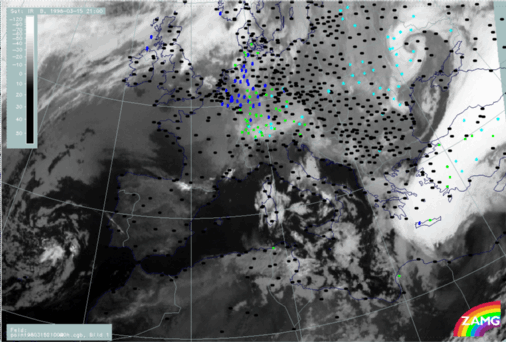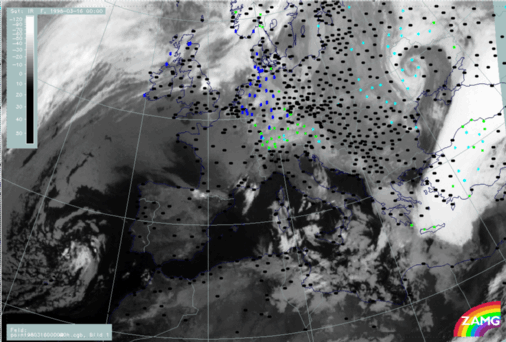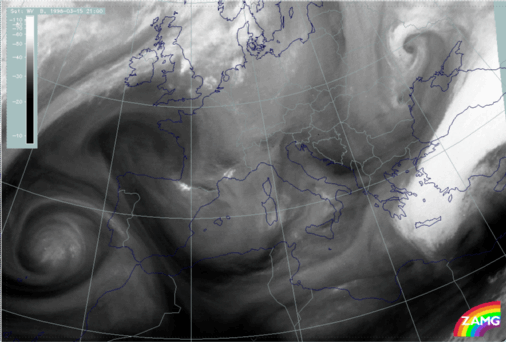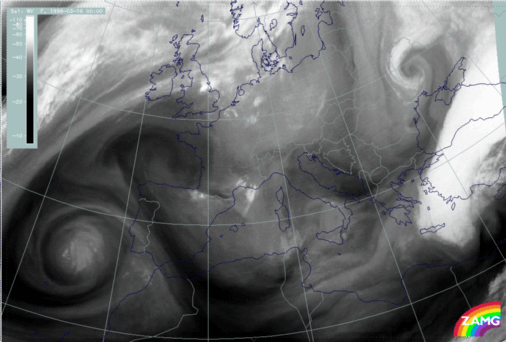15 - 16 MARCH 1998 - 15/21.00 - 16/00.00 UTC - OVERVIEW OF SATELLITE IMAGERY
by ZAMG
|
15 March 1998/21.00 UTC - Meteosat IR image; weather events (green: rain and showers, blue: drizzle, cyan: snow, red: thunderstorm with
precipitation, purple: freezing rain, orange: hail, black: no actual precipitation or thunderstorm with precipitation)
|
16 March 1998/00.00 UTC - Meteosat IR image; weather events (green: rain and showers, blue: drizzle, cyan: snow, red: thunderstorm with
precipitation, purple: freezing rain, orange: hail, black: no actual precipitation or thunderstorm with precipitation)
|

|

|
|
15 March 1998/21.00 UTC - Meteosat WV image
|
16 March 1998/00.00 UTC - Meteosat WV image
|

|

|


